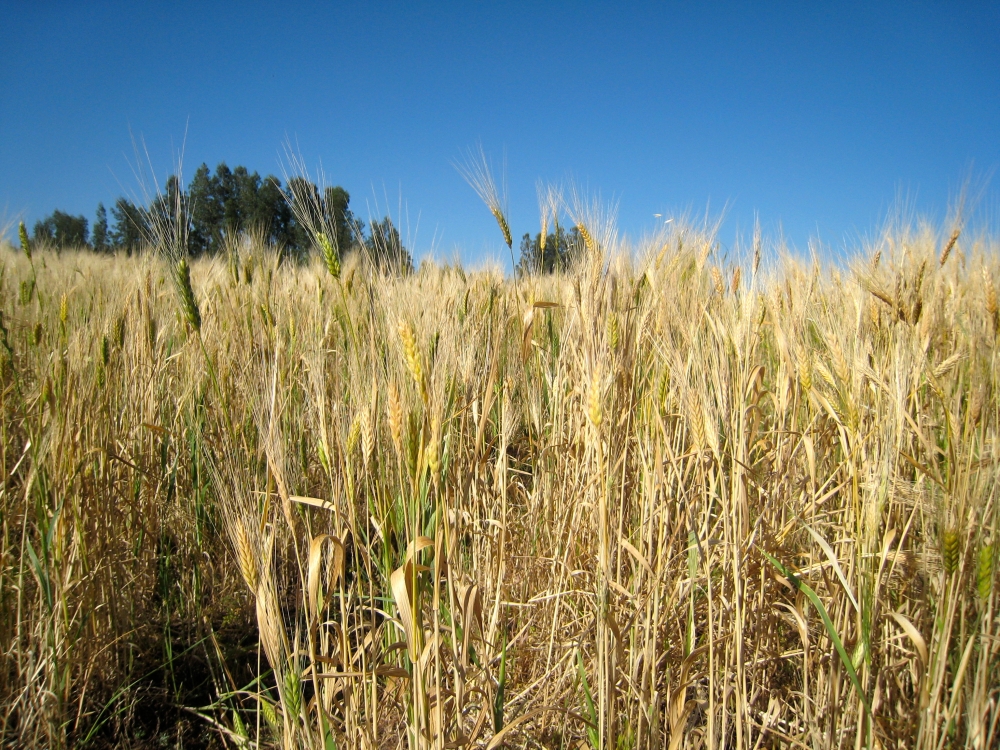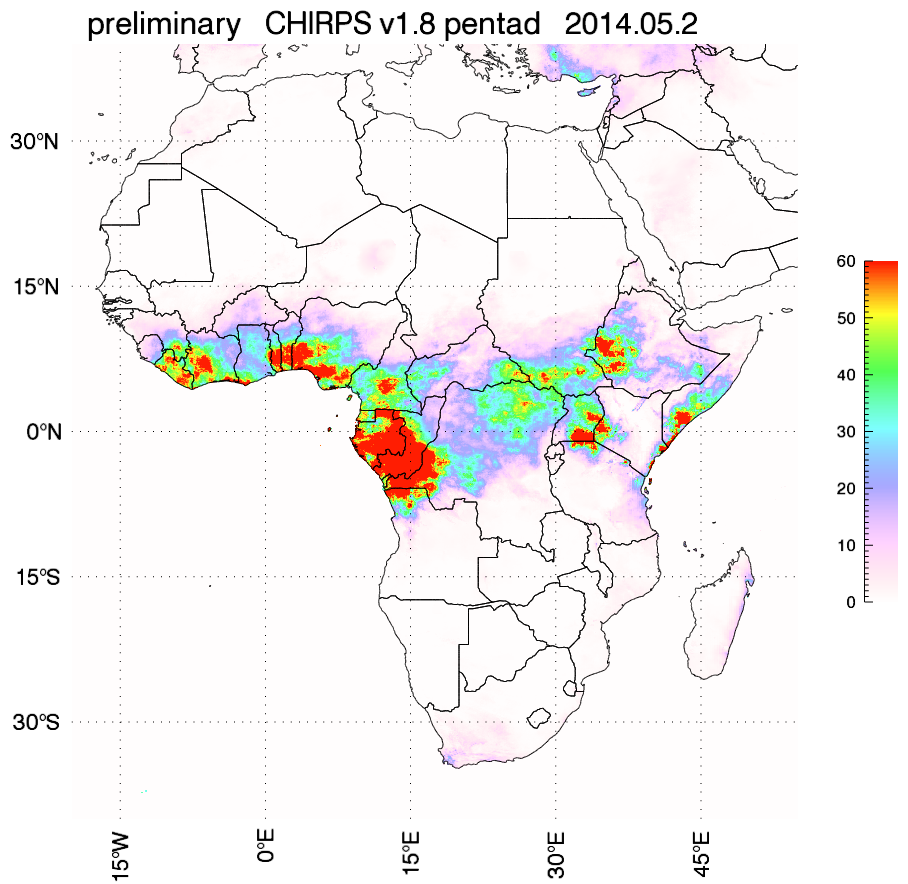UCSB’s Climate Hazards Group developed a satellite-based rainfall monitoring dataset to support the early detection of drought globally. Julie Cohen, science and technology writer for The UCSB Current, reports (May 14, 2014):
Using modern weather satellites to monitor rainfall has become a robust, widely practiced technique. However, establishing a reliable context for relating space-based rainfall observations to current and historical ground-based rainfall data has been difficult.
A new dataset developed in partnership between UC Santa Barbara and the U.S. Geological Survey (USGS) can be used for environmental monitoring and drought early warning. The Climate Hazards Group Infrared Precipitation with Stations (CHIRPS), a collaboration between UCSB’s Climate Hazards Group and USGS’s Earth Resources Observation and Science (EROS) couples rainfall data observed from space with more than three decades of rainfall data collected at ground stations worldwide.
“This dataset seeks to blend the best qualities of rainfall station observations, satellite temperature data and rainfall’s unique spatial characteristics to create the best available rainfall information for climate and agricultural monitoring,” said Gregory J. Husak, an assistant researcher with the Climate Hazards Group in UCSB’s Department of Geography. The new dataset allows experts who specialize in the early warning of drought and famine to monitor rainfall in near real-time, at a high resolution, over most of the globe. CHIRPS data can be incorporated into climate models, along with other meteorological and environmental data, to project future agricultural and vegetation conditions.
Specifically designed for drought monitoring, CHIRPS is already being used to identify possible hot spots of food insecurity. Much of East Africa is still recovering from a series of poor rainy seasons in 2008, 2009, 2011 and 2012. Food prices remain high, especially in South Sudan, where civil war has led to the displacement of more than a million refugees.
Kenya relies heavily on highly productive farms located in the Rift Valley by Lake Victoria. Usually, abundant spring rains support high crop yields that feed millions of people. This year, however, the CHIRPS dataset has identified a very poor start to the growing season. CHIRPS’ long historical record indicates that April’s rainfall total was the lowest in 34 years (about two inches for the entire month). This information has been passed along to the Famine Early Warning Systems Network of the U.S. Agency for International Development (USAID), prompting on-the-ground assessments of potential crop failure.
In addition to providing high-resolution, near real-time information to support early warning, UCSB and USGS scientists are also using the CHIRPS data to explore recent trends in rainfall. For instance, long-term rainfall has been declining across both the southwestern United States and easternmost part of East Africa. The scientists are working with USAID to incorporate this information into development and adaptation strategies in Africa. “Our most recent research suggests that these declines are likely linked to warming in the western Pacific and eastern Indian oceans,” said Chris Funk, a research scientist with the USGS’ EROS.
CHIRPS data can help guide climate-smart development. It can also help water managers, hydroelectric power companies, natural resource managers and disaster relief agencies prepare for a changing climate. Available to the public, the CHIRPS data archive is hosted by both the UCSB Climate Hazard Group and USGS’ EROS. Its development has been funded by USGS, USAID, the NASA Applied Sciences Program and the National Oceanic and Atmospheric Administration. Scientific programmers Pete Peterson and Marty Landsfeld, members of the Climate Hazards Group, curated the satellite and station datasets used to build the CHIRPS.
Editor’s notes: “CHIRPS is just the latest piece of over 15 years of developing decision support tools for early warning drought monitoring here at the Climate Hazards Group. I feel very fortunate doing work that utilizes my Geography and Computing skills and has such a big impact on lives of many people around the world. This is why I got into Geography in the first place” – a quote by Peter Peterson, who did what Greg Husak describes as “the heavy lifting” on this.
The USGS Science Features listed this as their Top Story on May 14. See the USGS version, authored by Jon Campbell, here and check out the CHIRPS homepage here.






.jpg)
